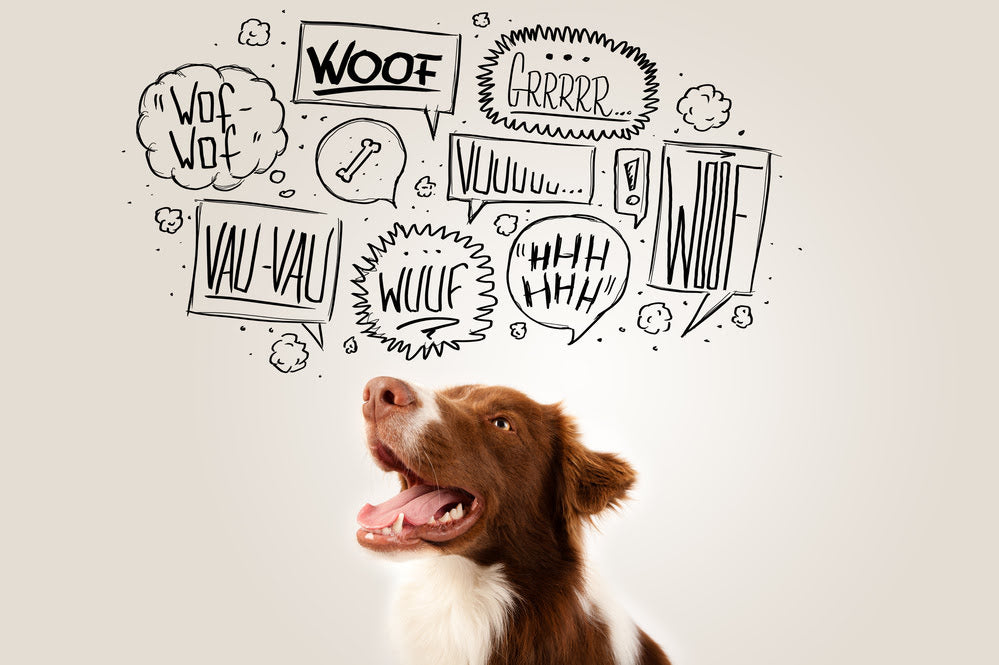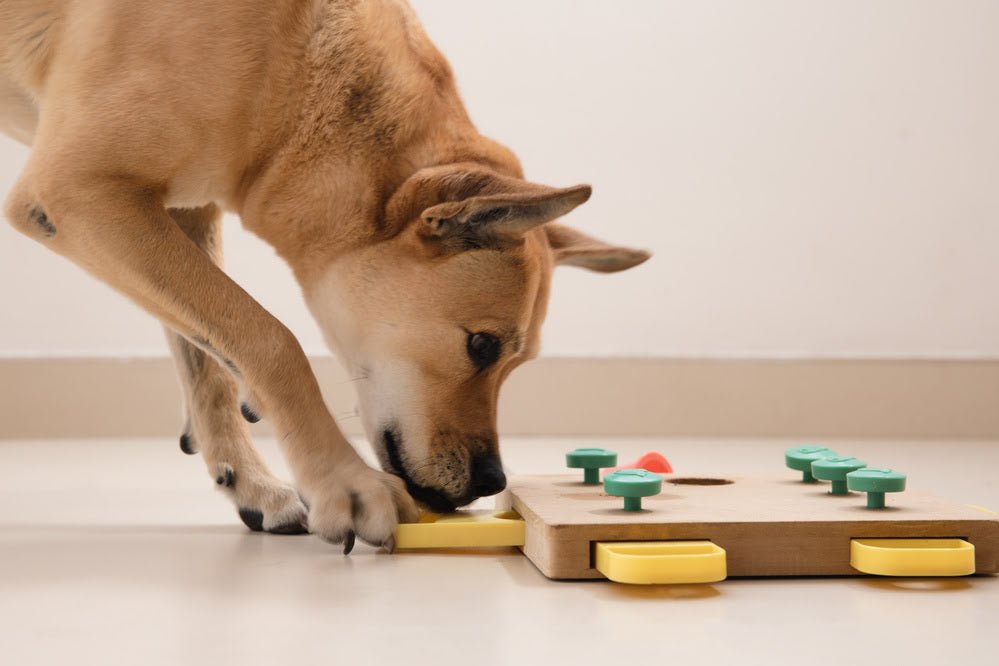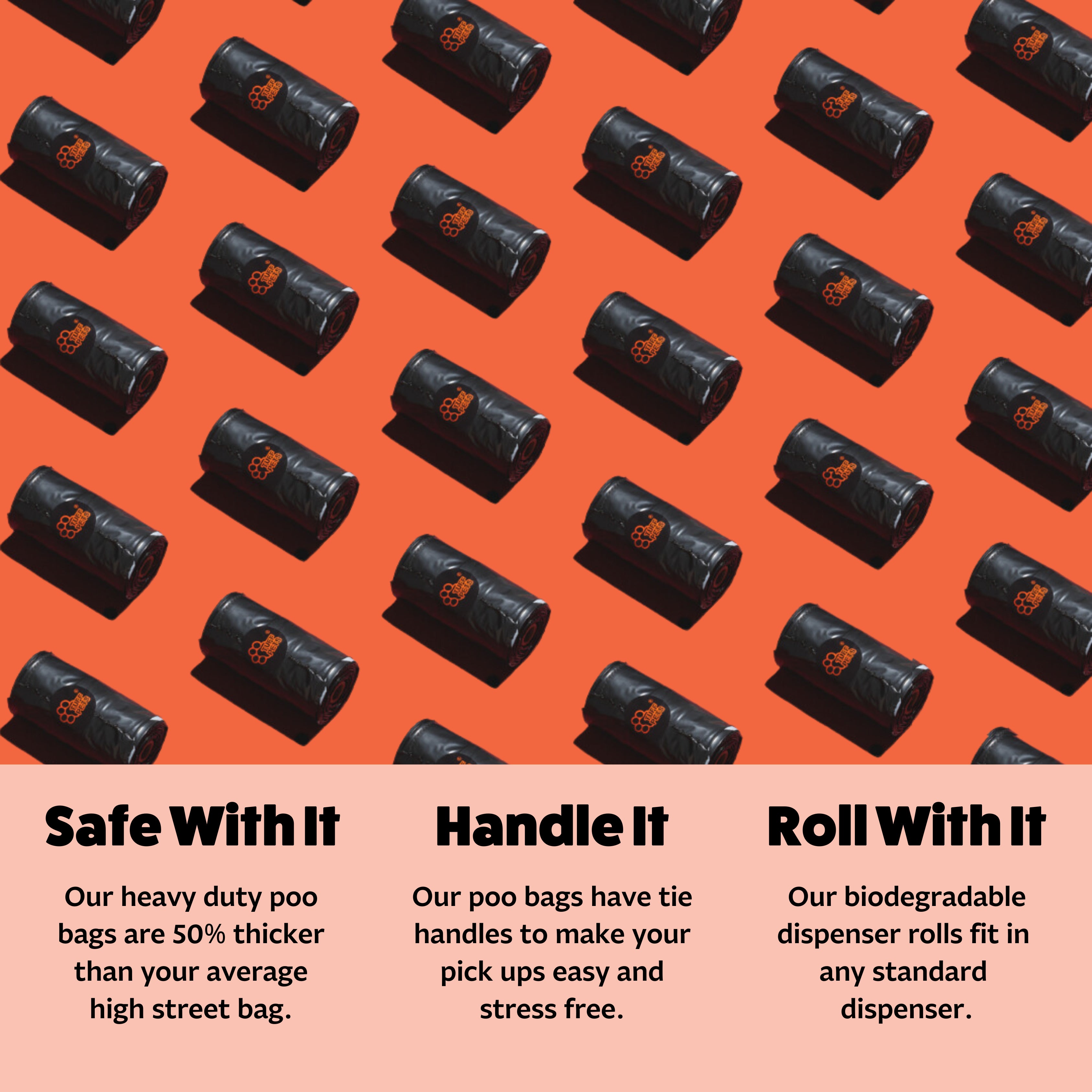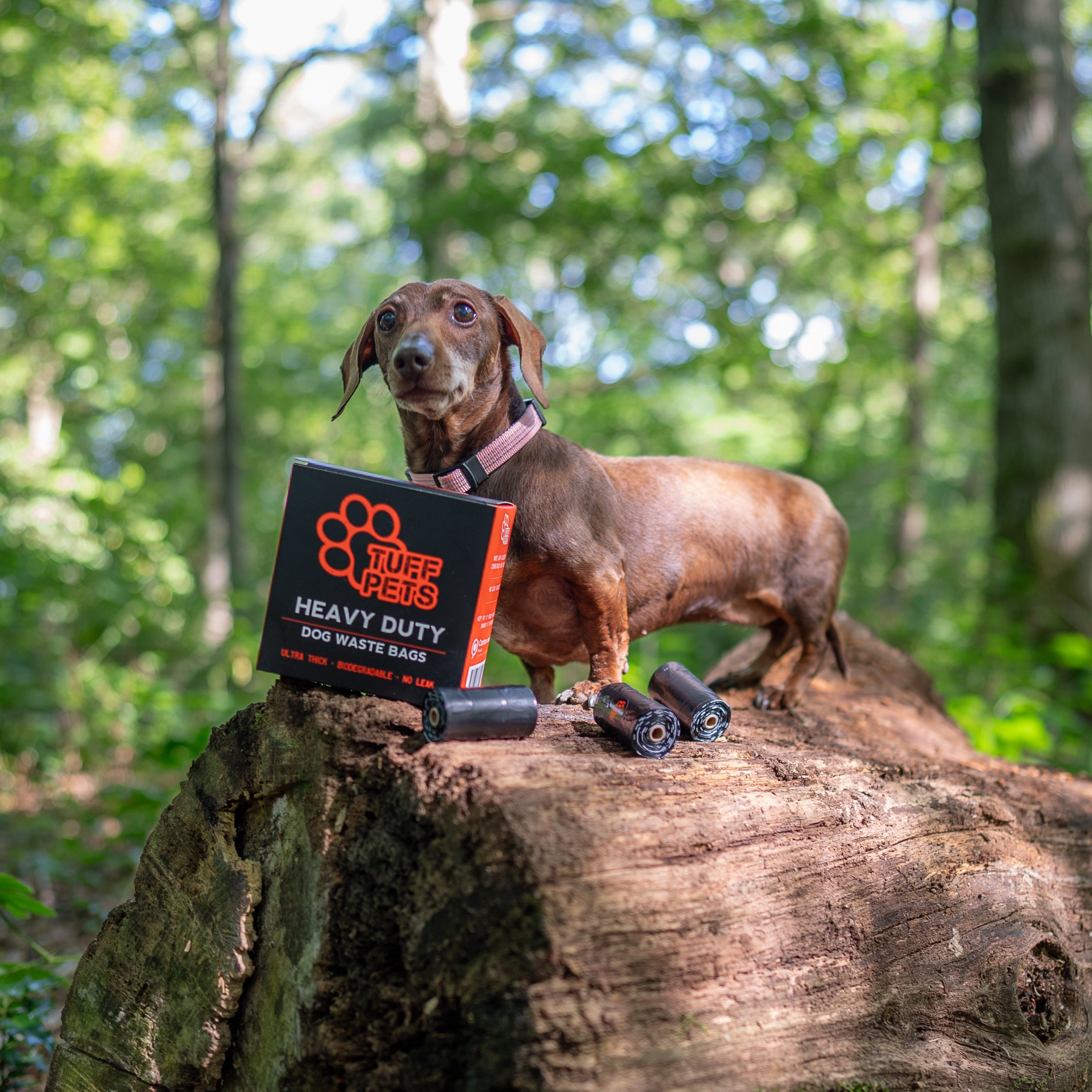Do you ever look at your pup and wish you could understand them a little better?
As pet owners, we often want to figure out what our four-legged friends are trying to tell us with their body language. You know when they’re happy or hungry; however, the subtle changes in behaviour can be more difficult to decipher.
In this blog post, we'll demystify some of the key body language signals dogs use to communicate—from tail wagging and barking, to facial expressions and ear positions—so that pet parents like you can speak dog fluently!
Read on for everything you need to know about understanding canine communication, dog mannerisms & how to talk dog!
How do dogs communicate?
Have you ever wondered how dogs successfully interact with one another? Well, dogs communicate using a variety of methods such as vocalisations, scents, and body signals.
The most common form of communication between dogs is body language, which includes body posture, facial expressions, and tail movement.
A happy dog is easy to spot - its body will be relaxed, head held high, tail wagging, and ears perked up.
Conversely, when a dog is scared or threatened, its body will appear tense, head lowered, tail tucked, and ears pinned back.
So, the next time you're playing with your furry friend, pay attention to their body language and you might just learn a thing or two about the fascinating world of dog communication.
Reading and understanding your dog's body language

Dogs have their own unique way of communicating with us and it's up to us to learn their language.
Understanding your dog's body language is vital in building a strong bond between you and your furry friend.
Dogs use a variety of body signals to convey their emotions, from wagging tails to flattened ears, and it's important to decipher what they mean.
A stressed dog body language can include avoidance or aggression and is incredibly important to be able to recognise.
By observing your dog's communication closely, you can not only strengthen your relationship, but also recognize when your dog is feeling happy, afraid, or stressed.
So, take the time to learn your dog's body language and watch your bond grow stronger every day.
Tail Wagging
The way your dog wags his tail can tell you a lot about his emotional state. When your dog's tail is relaxed and wagging gently, he's probably feeling content and relaxed - a happy dog.
However, if the tail is stiff or held high, it could indicate excitement or even aggression. It's also important to pay attention to your dog's entire body – if he's tense or his ears are pulled back, he may not be in the mood for a friendly pat.
Understanding your dog's wagging tail and body language can make all the difference in your relationship with your furry companion.
What your dog's ears can tell you

As social animals, dogs have developed a range of body signals to communicate with one another - including their ears.
If your pup's ears are perked up and facing forward, it generally means that they are feeling alert and curious.
Conversely, if their ears are laid flat against their head, it can indicate fear or submissiveness.
If your dog's ears are constantly twitching or moving around, it may be a sign that they are feeling anxious or uncertain about their surroundings.
Overall, paying attention to your dog's communication cues - including their ears - is a crucial part of building a strong bond and understanding their needs.
Hanging Head
One cue to keep an eye out for is the infamous hanging head. When your pup drops their head low to the ground, it could mean a variety of things depending on the context, but for the most part, it's a sign that they're feeling somewhat submissive or shy.
However, be mindful that in some cases, a fearful dog may also have their head low, so it's important to read the rest of their body language to get a better idea of what's going on.
Regardless, taking note of your dog's hanging head can help deepen your bond with them and give you a better understanding of their unique personality.
How to tell if your dog is uncomfortable, anxious, or scared

Our dogs are our best friends, and it is our duty to make sure they are always happy and comfortable.
Sometimes, our furry friends might feel anxious, uncomfortable, or scared, and as their owners, it's up to us to recognize the signs.
If you notice your dog shaking or panting excessively, licking their lips, tail between their legs, or if they shrink away or make themselves small, there's a good chance they are feeling uneasy.
Don't panic, though. It's essential to remain calm and comfort them. Speak softly, pet them gently, and give them some space to breathe.
With a little love and attention from their favourite humans, your dog will be feeling better in no time!
Raised Hackles
Have you ever noticed your furry pal's hair along their back standing straight up?
This is what is known as raised hackles, which can be a sign of your dog being frightened or in a state of fear. It's their way of showing anxiety and a form of self-defence mechanism.
But don't worry, it doesn't necessarily mean they are aggressive or about to attack.
Instead, it's a clear indication that you need to assess your surroundings for any threats, and that they need a bit of comforting and reassurance from their owner.
So the next time you see your dog's hackles raised, give them the love and attention they need to help calm them down. We all know that a little bit of love goes a long way!
Low growl

While any growl may seem alarming, it's important to understand why they're doing it. A low growl is one way that a dog expresses their unease or fear.
They might be feeling anxious about a perceived threat, whether it's a stranger approaching or being in an unfamiliar environment. In some cases, it can also be a sign of aggressive behaviour.
However, it's important to remember that this bad dog behaviour can be curbed with proper training and guidance.
So, if your furry friend makes a low growling noise, pay attention to their body language and the situation at hand to determine what's causing the behaviour, then work to train their anxiety out of them.
Long, sustained growl
If your furry friend is growling loudly and for an extended period, it could be a sign of anxiety or fear.
Dogs often do this when they feel threatened or perceive a threat nearby. Instead of making a snap judgement and assuming that your canine is displaying aggressive behaviour, it's essential to take a step back and understand what they're trying to tell you.
Consult a professional trainer, who can help you decipher what's going on in your dog's mind. Remember, dogs can't verbally communicate, so it's up to us to understand their body language and other non-verbal cues.
With patience and understanding, you can relieve their anxiety and decode your dog's behaviour, providing them with the love and care they need to live a happy life as a relaxed dog.
Low-pitched bark

Canine communication can be a tricky thing to decode, but one behaviour that's worth paying attention to is the low pitched bark.
When our dogs bark in this way, they're trying to tell us something important. Often, it's a sign of excitement or enthusiasm, and it can also be a way of signaling to other dogs that they want to play or interact.
Sometimes, a low pitched bark can be accompanied by lunging forward, which is another sign that your dog is feeling energized and wants to engage with the world around them.
So next time you hear your pooch barking in this way, take a moment to observe their behaviour and see what they might be trying to tell you. It could be the start of a beautiful conversation.
Teeth Showing/Wrinkled Nose
Have you ever noticed your furry friend showing their teeth and wrinkling their nose? It may seem like an aggressive display, but it's actually a canine communication method.
When dogs bare their teeth and crinkle their nose, it's a sign that they are feeling threatened or uncomfortable with a situation.
They may be trying to warn other dogs or people to stay away, or they could be exhibiting their unease with their behaviour.
It's important to pay attention to your dog's body language and take action if they start baring their teeth. This simple gesture is one of your dog's ways of speaking to you, so make sure you're listening to their words!
How to recognise causes of behaviour

Learning to recognize the communication signals that dogs use can help you learn about reading dog body language and behaviour.
Understanding canine communication can also help you interact better with other dogs you encounter during walks or trips to the park.
Whether your canine companion is wagging their tail or growling, these actions are telling a story that you need to be able to decipher.
Paying attention to your surroundings and your dog's behaviour can give you the clues you need to understand what's going on.
Remember, just like humans, dogs have their own unique personalities and quirks that make them who they are and it is our job as their owners to learn to recognise these signs and their meaning!
What to do if your dog shows distressed or aggressive behaviour
If your furry companion is displaying distressed or aggressive behaviour, it's important to take the appropriate steps to ensure their safety and the safety of those around them.
Firstly, understanding subtle body language is key to deciphering your dog's emotional state. Look for signs such as a stiffened body or tense facial expression.
If you believe your dog requires more space or is feeling threatened, it's important to separate your dog from the situation. This can be done by placing them in a separate room or alone in the garden.
As a responsible pet owner, it's important to recognise these warning signs and take action to ensure your furry friend feels safe and secure.
Remember, always approach your dog with a calm and friendly demeanour to foster a positive relationship.


















Share:
Why Do Dogs Kick After They Poop? That & Other Reasons For Your Dog Kicking Their Back Legs Explained
When Do Puppies Open Their Eyes? And Other Things To Expect During a Young Puppy's Development